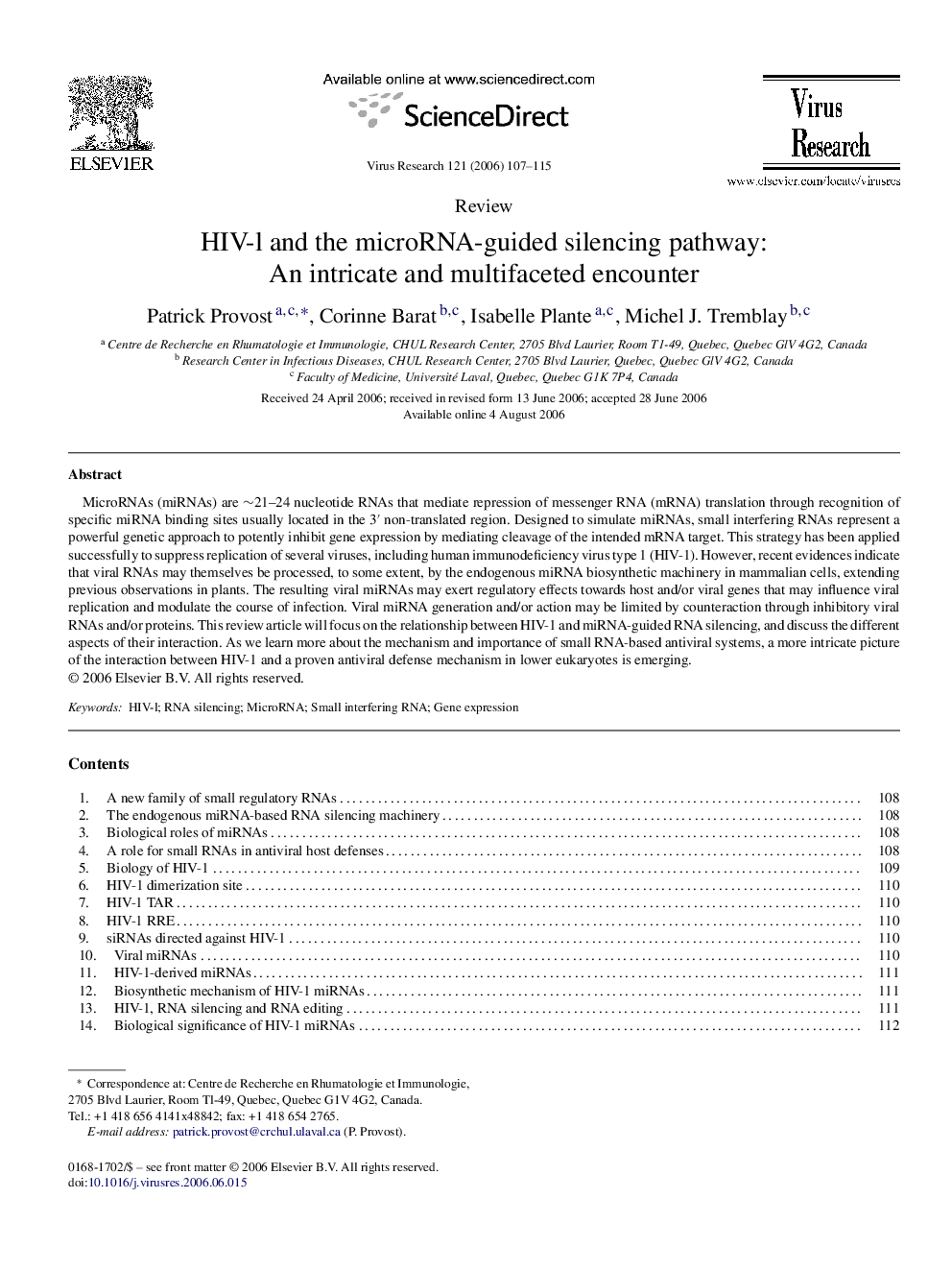| Article ID | Journal | Published Year | Pages | File Type |
|---|---|---|---|---|
| 3431052 | Virus Research | 2006 | 9 Pages |
MicroRNAs (miRNAs) are ∼21–24 nucleotide RNAs that mediate repression of messenger RNA (mRNA) translation through recognition of specific miRNA binding sites usually located in the 3′ non-translated region. Designed to simulate miRNAs, small interfering RNAs represent a powerful genetic approach to potently inhibit gene expression by mediating cleavage of the intended mRNA target. This strategy has been applied successfully to suppress replication of several viruses, including human immunodeficiency virus type 1 (HIV-1). However, recent evidences indicate that viral RNAs may themselves be processed, to some extent, by the endogenous miRNA biosynthetic machinery in mammalian cells, extending previous observations in plants. The resulting viral miRNAs may exert regulatory effects towards host and/or viral genes that may influence viral replication and modulate the course of infection. Viral miRNA generation and/or action may be limited by counteraction through inhibitory viral RNAs and/or proteins. This review article will focus on the relationship between HIV-1 and miRNA-guided RNA silencing, and discuss the different aspects of their interaction. As we learn more about the mechanism and importance of small RNA-based antiviral systems, a more intricate picture of the interaction between HIV-1 and a proven antiviral defense mechanism in lower eukaryotes is emerging.
